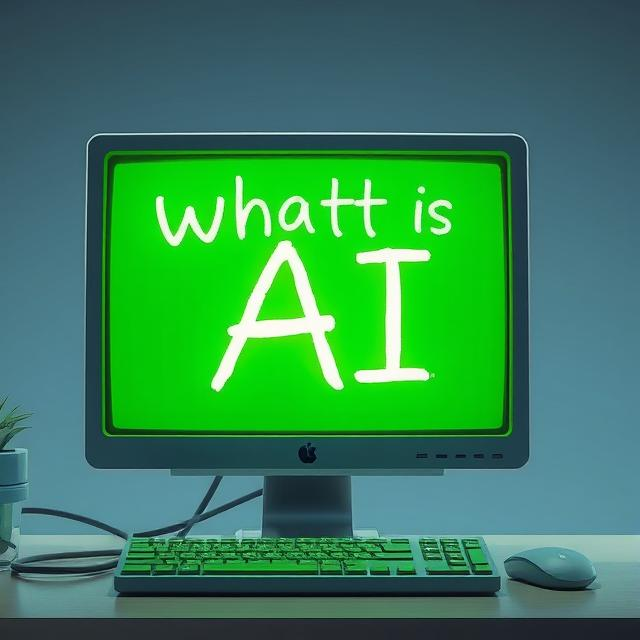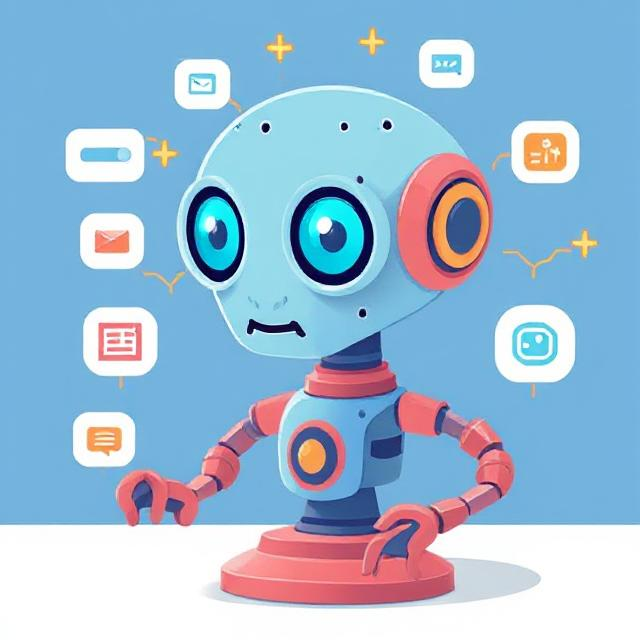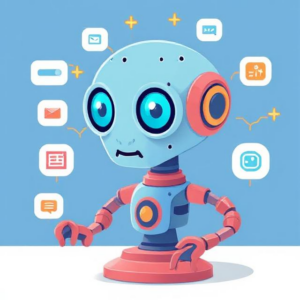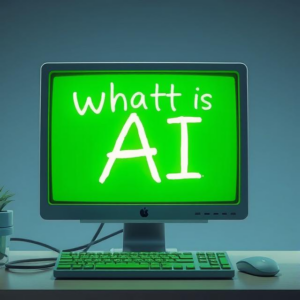What Is AI ( Artificial intelligence )
Imagine a world where your car drives itself, your phone anticipates your needs, and doctors detect illnesses before symptoms appear. This isn’t science fiction—it’s the reality shaped by Artificial Intelligence (AI). Once confined to myths and sci-fi, AI is now revolutionizing daily life. But what is AI, and how did it evolve? Let’s explore its journey.
The Evolution of AI: From Myths to Machine Learning
The concept of AI dates back to ancient myths of mechanical beings, but its modern foundation was laid in 1956 at the Dartmouth College workshop. Visionaries like John McCarthy asked the pivotal question: Can machines think? Over decades, AI has transformed from an abstract idea to a powerful tool, thanks to breakthroughs in big data and machine learning. Pioneers like Alan Turing envisioned intelligent machines, leading to innovations that enable AI to learn, adapt, and create today.
Understanding AI: Narrow AI vs. General AI
AI comes in two primary forms:
- Narrow AI (Weak AI): This AI specializes in specific tasks. Examples include Netflix recommendations, Siri’s voice assistance, and Tesla’s autopilot. While highly efficient, it cannot operate beyond its designated functions.
- General AI (AGI): Unlike Narrow AI, AGI would function similarly to human intelligence, learning diverse tasks, solving problems, and adapting to new situations. While AGI remains theoretical, it sparks debates on its potential impact on humanity.
How AI Learns: The Science Behind Smart Machines
AI learns through data and algorithms. The most common learning methods include:
- Supervised Learning: AI learns from labeled data (e.g., spam detection).
- Unsupervised Learning: AI identifies patterns in unlabeled data (e.g., customer segmentation).
- Reinforcement Learning: AI improves through trial and error, like how Google’s AlphaGo defeated world champions in board games.
A key innovation is deep learning, where AI mimics the human brain using neural networks, powering applications like facial recognition and chatbots.
Real-World Applications of AI
AI is revolutionizing multiple industries:
- Healthcare: AI detects diseases early and customizes treatments based on patient data.
- Finance: AI detects fraud and predicts stock market trends.
- Creativity: AI-generated art, music, and stories blur the line between human and machine creativity.
- Transportation: Self-driving cars are paving the way for safer, more efficient travel.
Challenges & Ethical Considerations in AI
As AI advances, ethical concerns arise:
- Bias in AI: If trained on biased data, AI can make discriminatory decisions.
- Privacy Issues: AI relies on vast amounts of personal data, raising security concerns.
- Impact on Jobs: While AI may automate tasks, it also creates new career opportunities in AI development and ethics.
The Future of AI: What Lies Ahead?
The future of AI holds immense potential—ranging from climate change solutions to medical breakthroughs. However, ensuring AI aligns with human values requires collaboration between researchers, policymakers, and society.
Final Thoughts: What is AI’s Role in Our Future?
AI is more than just a technological advancement; it’s a tool that can shape the world for better or worse. As we embrace AI, the question isn’t just What can AI do? but How do we guide AI responsibly? The future of AI is in our hands—let’s shape it wisely.
Frequently Asked Questions About Artificial Intelligence (AI)
Artificial Intelligence (AI) is a transformative technology that continues to shape industries and daily life. As interest grows, so do questions about its capabilities, implications, and future. Here are answers to some of the most frequently asked questions about AI.
1. What is Artificial Intelligence (AI)?
AI refers to machines or systems designed to mimic human intelligence, enabling them to perform tasks such as learning, problem-solving, decision-making, and language understanding. Unlike pre-programmed software, AI adapts and improves through data analysis and experience.
2. What Are the Types of AI?
- Narrow AI (Weak AI): Specialized in specific tasks (e.g., chatbots, facial recognition).
- General AI (Strong AI): Theoretical systems with human-like reasoning (not yet realized).
- Superintelligent AI: A hypothetical future AI surpassing human intelligence.
Most current applications fall under Narrow AI.
3. How Is AI Different from Machine Learning (ML)?
AI is the broader concept of machines performing intelligent tasks. ML, a subset of AI, involves algorithms learning patterns from data to make predictions. Deep Learning (DL), a subset of ML, uses neural networks for complex tasks like image recognition.
4. What Are Real-World Applications of AI?
- Daily Life: Virtual assistants (Siri, Alexa), streaming recommendations (Netflix), spam filters.
- Healthcare: Diagnostic tools, drug discovery.
- Transportation: Autonomous vehicles, route optimization.
- Finance: Fraud detection, algorithmic trading.
5. Will AI Replace Human Jobs?
AI will automate repetitive tasks (e.g., manufacturing, data entry), but it also creates new roles in AI development, data analysis, and ethics. Historical shifts, like the Industrial Revolution, show that while jobs evolve, new opportunities emerge with proper reskilling.
6. How Does AI Learn?
AI learns through:
- Supervised Learning: Training on labeled data (e.g., classifying emails as spam).
- Unsupervised Learning: Finding patterns in unlabeled data (e.g., customer segmentation).
- Reinforcement Learning: Learning via trial and error with rewards (e.g., game-playing AI).
Large datasets and computational power are critical for effective learning.
7. What Ethical Concerns Does AI Raise?
- Bias: AI can perpetuate biases in training data (e.g., discriminatory hiring algorithms).
- Privacy: Mass data collection risks misuse (e.g., facial recognition in surveillance).
- Accountability: Determining responsibility for AI errors (e.g., self-driving car accidents).
Efforts like the EU’s GDPR aim to regulate data usage and transparency.
8. What Does the Future of AI Look Like?
Expect advancements in natural language processing (e.g., more intuitive chatbots), healthcare (personalized medicine), and robotics. Challenges include ensuring ethical governance and preventing misuse, such as deepfakes or autonomous weapons.
9. How Can Businesses Implement AI?
- Identify Use Cases: Customer service chatbots, inventory management.
- Partner with Experts: Collaborate with AI developers or cloud providers (e.g., AWS, Google Cloud).
- Ensure Data Quality: High-quality, diverse data is essential for effective AI models.
Start small, then scale solutions as needed.
10. Is AI Safe?
Current AI lacks consciousness, but risks include biased decision-making, security vulnerabilities, and job displacement. Safeguards like ethical guidelines, transparent algorithms, and human oversight are critical to responsible AI development.














Post Comment